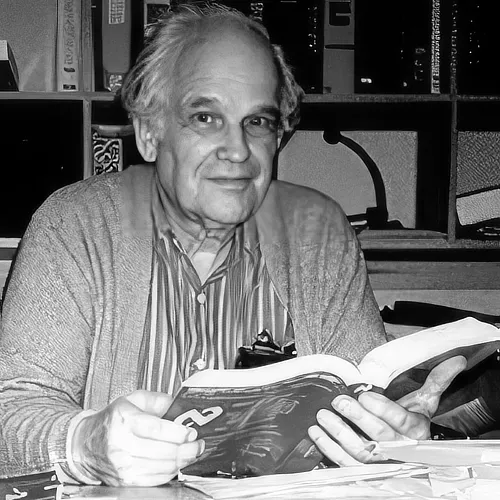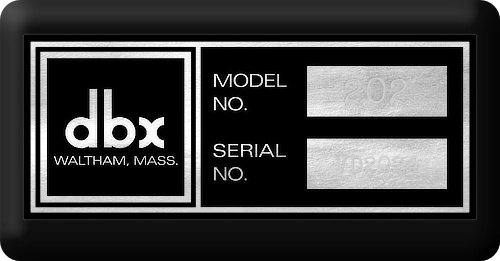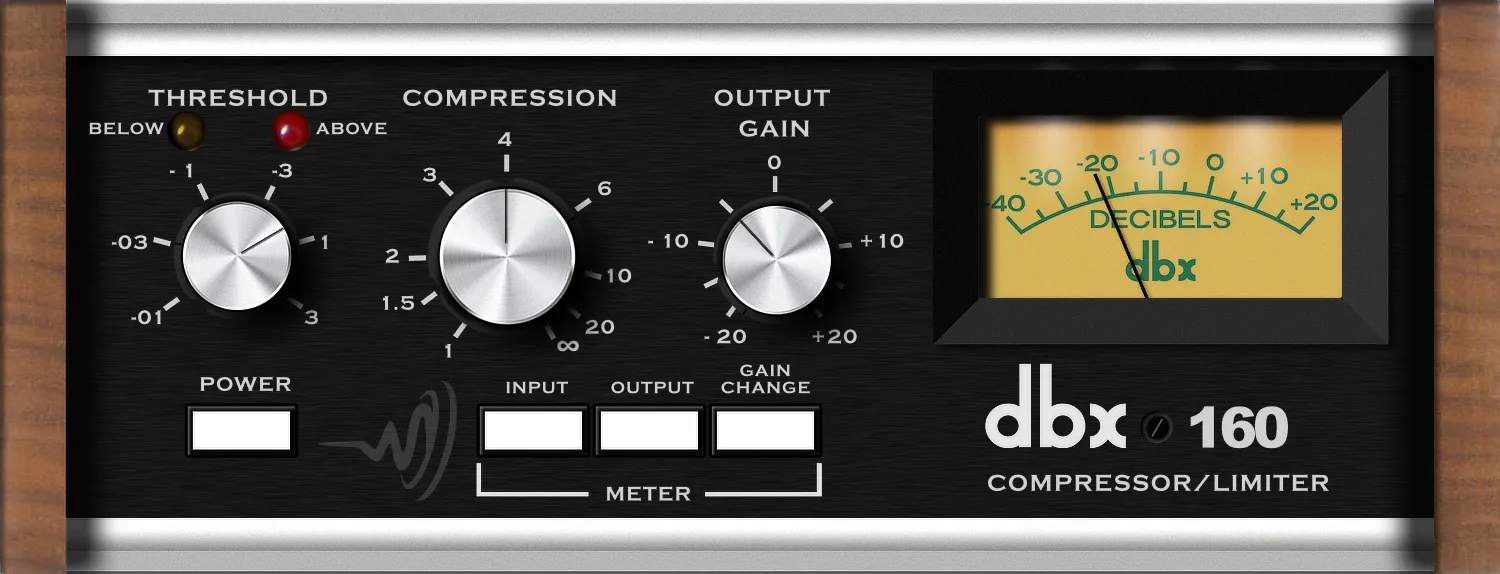The History of DBX
March 4, 2023
DBX has a huge history in the professional audio recording world, with their range of compressor/limiters being commonplace in live effects racks, and in studios the world over, particularly during the 1970s and 1980s. dbx is a professional audio equipment company that is best known for its audio compressors. The company was founded in 1971 by David Blackmer, a design engineer with a background in audio technology. The name “dbx” is derived from Blackmer’s initials, and the company’s logo features a stylised version of his signature. After producing a number of dynamic range enhancers for the consumer audio market, Blackmer turned his attention to the professional audio world, with the release of the famous dbx 160 Compressor/Limiter.
The Compressor That Started it all
dbx 160 Compressor/Limiter
In 1976, dbx released their first dynamic range compressor for professional audio. However, Blackmer, whose main goal was to increase the dynamic range of recorded audio, reportedly did not approve of the idea. Despite this, the two-rack space, half-width box became popular with engineers seeking cost-effective alternatives to devices like the legendary LA-3A and 1176, despite its limited features.
It is worth noting that the 160s compression curve had a “hard knee,” meaning compression onset was immediate, resulting in noticeable compression depending on the ratio and threshold settings. As with many audio devices that have achieved “classic” status, these perceived shortcomings were not necessarily a disadvantage and often contributed to their desirability. The dbx 160 VU model utilised the first commercial version of the Blackmer gain cell, the 200 VCA, and its companion RMS detector, the 207/208. Both were discrete-transistor devices on small, printed circuit boards potted in metal enclosures.
One persistent myth about the 160VU is that it has balanced I/O. The input stage is indeed a textbook differential amplifier built around a TL082 FET op-amp with a gain of -6 dB. However, the output driver is different and unbalanced. The 160 VU’s ground-cancelling output uses a non-inverting driver circuit, which is a single output op-amp stage with push-pull drive transistors driving pin 2, with pin 3 designed to cancel out any unwanted voltages, such as ground hum, that may appear on pin 1 (ground). The gain of this stage is set at +10dB.
So, what distinguishes the 160 and 161 VU models? Firstly, the 161’s inputs and outputs are unbalanced and calibrated for -10dBV (consumer audio) on RCA connectors. Secondly, the 161’s output stage lacks output drive transistors and ground-cancelling circuitry and also has a higher output impedance. In fact, the 161’s post-VCA current-to-voltage conversion op-amp stage serves double duty as the output driver.
“The DBX 160 VU Compressor/Limiter is a classic for a reason. It’s been a stalwart in my studio for decades. The compression and limiting it offers is excellent. This workhorse can handle anything you throw at it, from drums to vocals, with finesse. If you’re after a reliable and timeless piece of gear, this is it. A true legend in the world of audio processing.”
The DBX 160 was used on these classic recordings
The Legendary Designer
David Blackmer
David Blackmer was an American audio engineer and entrepreneur who is best known as the founder of dbx, a leading manufacturer of professional audio equipment. Blackmer was born in California in 1927 and grew up in a musical family – his father was a violin maker, and his mother was a pianist.
Blackmer developed an interest in electronics and audio technology at an early age, and studied electrical engineering at the California Institute of Technology. After completing his degree, he worked as an engineer for a number of companies, including the aerospace firm Northrop Corporation.
In the late 1950s, Blackmer became interested in the design of audio amplifiers, and began experimenting with new circuit designs and technologies. He founded his first audio equipment company, called Thermionic Products, in 1958, and developed a number of innovative vacuum tube amplifiers and signal processors.
However, in the early 1970s, Blackmer turned his attention to solid-state technology, and founded dbx in 1971. The company’s first product was the dbx 202 “Boom Box,” a portable bass amplifier that used a unique solid-state distortion circuit to produce a powerful and dynamic bass sound.
However, it was the release of the dbx 160 compressor in 1976 that really put dbx on the map. The dbx 160 was the first commercially successful audio compressor to use a voltage-controlled amplifier (VCA) as its gain reduction element, and it quickly became a favorite among recording engineers and producers.
Over the next few years, Blackmer and his team at dbx continued to develop and refine their compressor technology, releasing models like the dbx 162, 165, and 165A. These compressors became staples of the recording industry in the 1980s and beyond, and helped establish dbx as a major player in the professional audio market.
Blackmer continued to oversee the development of new products and technologies at dbx until his death in 2002. He was widely respected as a pioneering figure in the audio industry, and his innovative designs and technologies continue to influence the way that music is recorded and produced today.

“The Blackmer VCA (voltage-controlled amplifier) and RMS detector revolutionised the audio landscape, giving rise to the dbx noise reduction system, dbx compressors, and the dbx subsonic synthesiser.”
Not simply a stereo DBX 160
dbx 162 Stereo Compressor/Limiter
The next model to enter the dbx range was the dbx 162. The dbx 162 is often incorrectly referred to as a stereo dbx160 however this isn’t quite the case. Unsurprisingly, there are a few key differences. First, where the core of the 160 VU was the 200 VCA and 207 RMS detector, the 162 used the 210 VCA, a four-transistor device (a pair of complementary current mirrors; the true “core” of the Black gain cell) on a daughter card instead of the expected potted can.
Stereo operation is made possible by a dual RMS detector (also on a daughter card) with two inputs and a single output: both channels are summed to a single sidechain. Inputs are balanced differential amplifiers. Outputs, like those on the dbx 165, are unbalanced and ground-cancelling. Both inputs and outputs remain on terminal strips. The threshold control is still labelled in Volts, though some older versions retain the dbx 160 VU’s 10mV to 3V threshold labelling, while a newer version omits the unit altogether and is simply labelled “.01” to “3.”
“The DBX 162 is often mistakenly seen as a stereo version of the DBX 160, this is not the case as its design does differ”
Over Easy Compression
dbx 165 Overeasy Compressor/Limiter
The dbx 165, was clearly intended to be the flagship of dbx’s professional audio lineup. It was built around the latest eight-transistor 202 VCA (a “black can” version of the VCA used in automation systems in consoles by MCI, SSL, and others) and an 8-pin DIP IC RMS detector. The 165 had a fully balanced differential amplifier input, although the output remained single-ended, with the cold signal output terminal internally connected to the ground terminal, as stated in the 165 manual.
The 165 had attack and release controls, a threshold control labelled in proper dB units, and most significantly, was the first dbx device to feature Over Easy soft-knee compression. Unlike its predecessors, the 165 was capable of stereo linking using a proprietary cable available from dbx. The 165 also added sidechain detector access on the I/O terminal strip.
“The DBX 165 was the first DBX compressor to feature the new Over-Easy compression mode”
The Blackmer Gain Cell
In 1971, Blackmer designed noise reduction systems for tape recorders, with a series of dynamic range expanders. During this process, he created the Blackmer Gain Cell, which would become his greatest legacy. This innovation consisted of four transistors, two NPN and two PNP, configured as complementary current mirrors. One pair could adjust the current flow through the other when an incoming control current was received.
Although voltage-controlled amplifiers (VCAs) were not new, as analogue synthesisers had been using them to shape sound envelopes in the late 1960s, Blackmer’s VCA was the first with low enough noise and distortion to be suitable for use in professional audio products. The Blackmer Gain Cell was patented in 1973. From here, he went on to design the class leading compressors of their time.

The Introduction of Peak Stop Limiter
dbx 165A Over Easy Compressor/Limiter
The dbx 165A took the dbx 165 and added the Peak Stop Limiter, a diode-based hard limiter. The addition of the Peak Stop Limiter to the dbx 165A is widely regarded as a subpar enhancement due to its diode-based hard limiting, which many people believe produces unfavourable sound quality.
A new design aesthetic
dbx 160X Compressor/Limiter
The succeeding version of the dbx 160, the dbx 160X, introduces a number of noteworthy differences from the 160 VU. Foremost, it alters the physical design to a single-rack space full-width configuration, featuring LED input and gain reduction meters. The dbx 160X introduces a simplified method of stereo coupling through an extra ¼-inch TRS connector, as well as external sidechain access on the I/O terminal strip.
“A much loved compressor/limiter that can still be found in studios the world over”
In addition to its compressors, dbx also developed a range of other audio processing equipment, including equalisers, noise reduction systems, and digital audio processors. The company’s products were widely used in recording studios, radio and television broadcast facilities, and live sound reinforcement systems. However, despite its early success, dbx faced significant challenges in the 1990s and 2000s. The rise of digital audio technology and the proliferation of affordable home recording equipment led to a decline in demand for professional audio gear, and dbx struggled to adapt to the changing market.
In 2001, dbx was acquired by Harman International Industries, a major player in the consumer and professional audio markets. Harman invested in new product development and marketing efforts, and dbx began to regain some of its former prominence. Today, dbx continues to produce a range of audio processors. While the company faces competition from a range of other manufacturers, it remains a respected and influential player in the professional audio industry.












